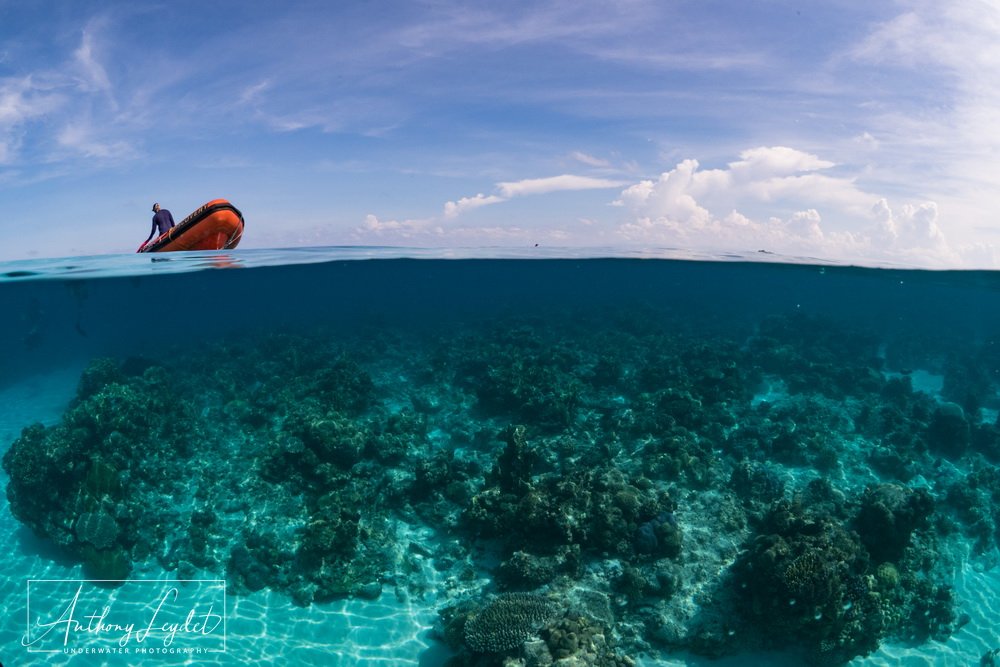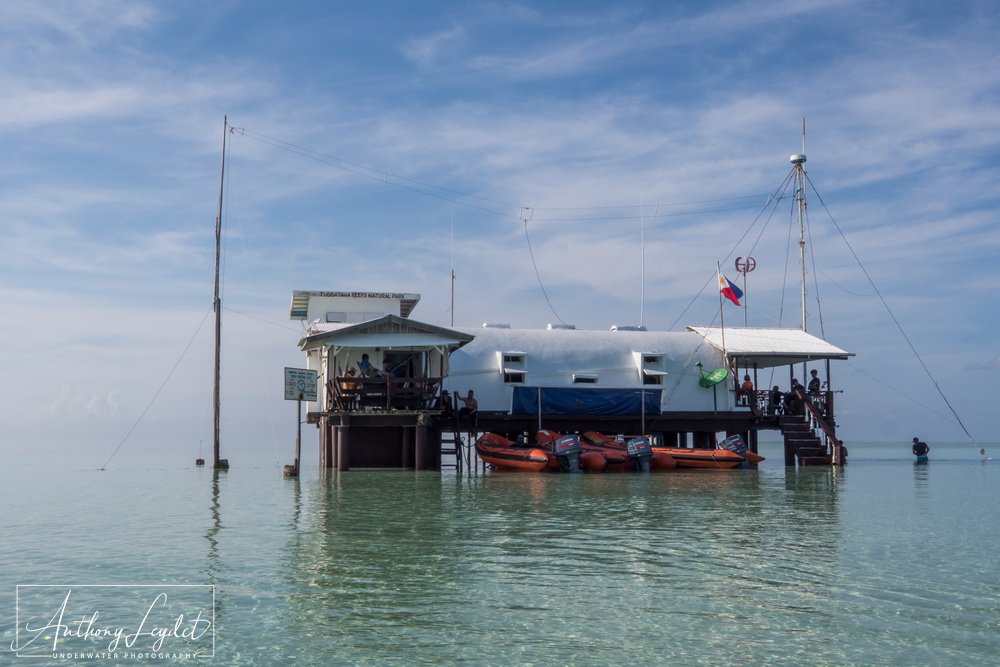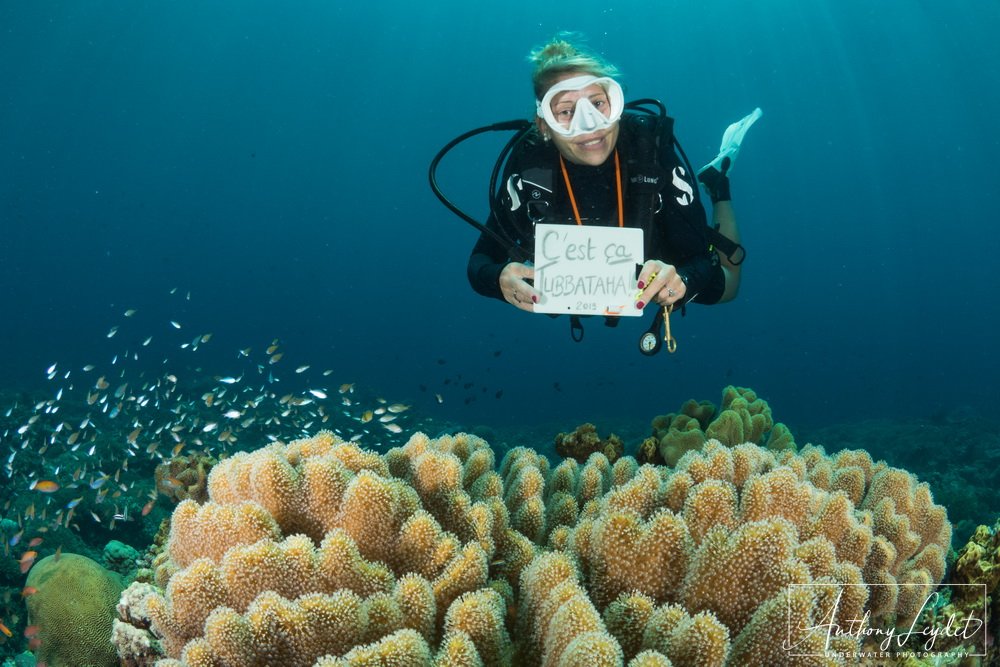Sommaire
In the heart of the Coral Triangle, the Philippines forms an archipelago of more than 7600 islands, and bathe in the waters that shelter the greatest marine biodiversity on the planet. The reefs of Tubbataha, firmly protected for more than 30 years, are the pride of the Filipinos. Classified as a UNESCO World Heritage Site, Tubbataha is simply one of the most beautiful diving destinations on the planet !
In the heart of the Sulu Sea, more than 140km from the coast of Palawan…
The sun is rising and the sky is already full of sublime colours above a sea of oil. The horizon is endless and just separates the sky from the sea. And you can only guess at the outline of the atolls, offering an azure blue ribbon that seems to stretch over a distance whose end you can’t see. We arrived here, in the middle of nowhere, after a ten-hour sail from Puerto Princesa, with its sweaty heat and blazing sun.

TUBBATAHA REEFS – South atoll view
In the heart of the Sulu Sea, Tubbataha reefs
“Here” is the Tubbataha Reef Natural Park. A curiosity since they are the only atolls in the Philippines. Two atolls (North atoll and South atoll) are accompanied by Jessie Beazley’s reef. They are the result of the activity of underwater volcanoes now extinct, the Cagayan chain.
In the Sama language (spoken in the southern Philippines), “Tubbataha” refers to “a long reef exposed at low tide”.
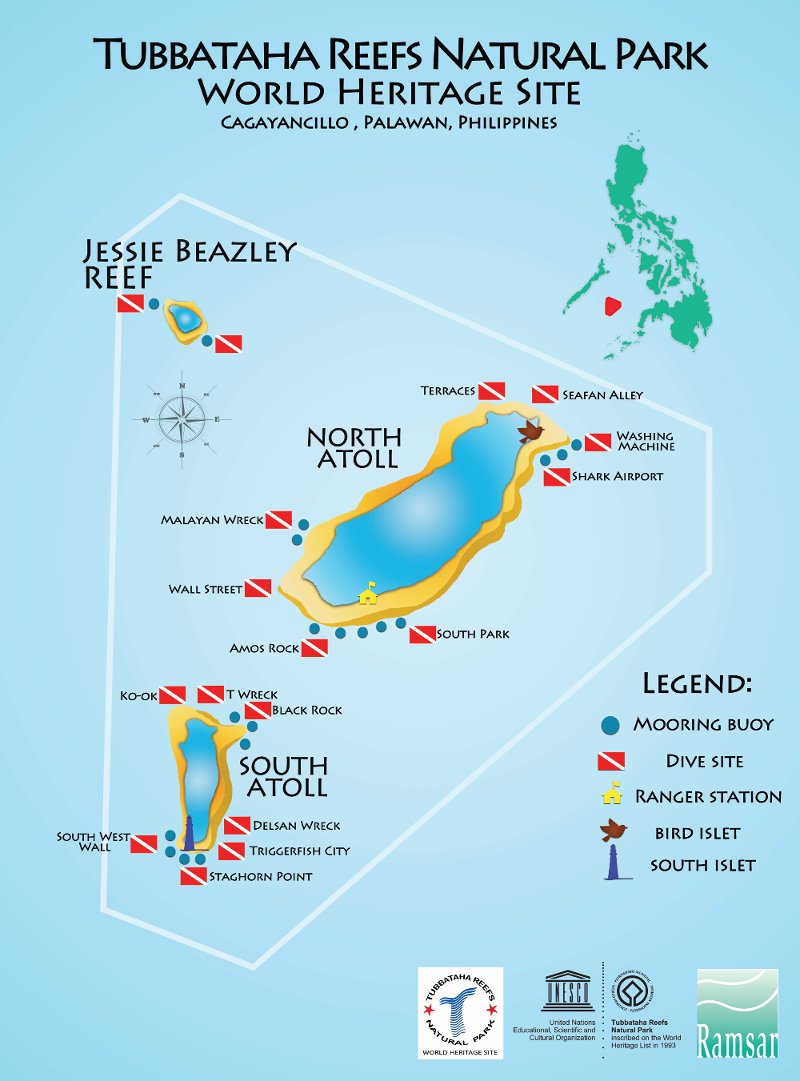 Because of their remoteness from the nearest islands, these coral reefs have long been naturally protected from overfishing, as the boats were not advanced enough to make such a crossing. But with the evolution of fishing boats, the first threats are coming, with cyanide or dynamite fishing, which is destructive to ecosystems.
Because of their remoteness from the nearest islands, these coral reefs have long been naturally protected from overfishing, as the boats were not advanced enough to make such a crossing. But with the evolution of fishing boats, the first threats are coming, with cyanide or dynamite fishing, which is destructive to ecosystems.
The response was swift to protect the site, which was classified as a marine reserve in 1988. And a few years later, in 1993, the atolls of Tubbataha were listed as a UNESCO World Heritage Site.
The National Park of the Tubbataha Reefs is delimited by a triangular area of 970km², which is about nine times the size of the city of Paris.
Diving Tubbataha Reefs : coral reefs, sharks & company
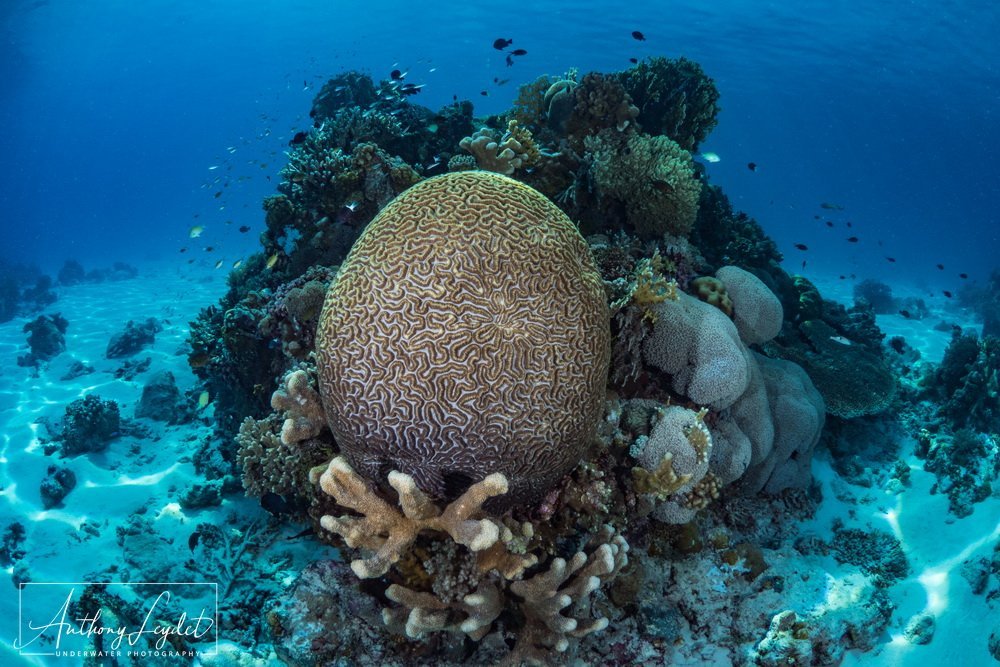
Brain coral – Tubbataha Reefs Natural Park
Diving in Tubbataha is a privilege. Because it is only during 3 months of the year, from mid-March to mid-June, that diving is allowed. The conditions are optimal with a sea that generally resembles a lake. And there are few boats authorized to access these reefs (16). Thus, only about 3000 divers per year have the joy of immersing themselves in the waters of Tubbataha. In other words, to keep these authorizations, teams and divers must show white paws. Here the diving rules are strict, and everything is done to ensure that divers have as little impact as possible on the environment. From the first evening, during the crossing, a clear and precise briefing is given by the Discovery Adventure team, the boat that welcomes us.
No touching, no disturbing, no collecting… The diver must be here only as a spectator. Common sense that should be applied everywhere in fact. In fact, it goes even further, because even if it does not appear on the presentation below, we are told that we must not land anywhere. And in the end we get used to it, because even as a photographer, I would not have put a finger or a knee on Tubbataha’s bottom during these 5 days of diving.
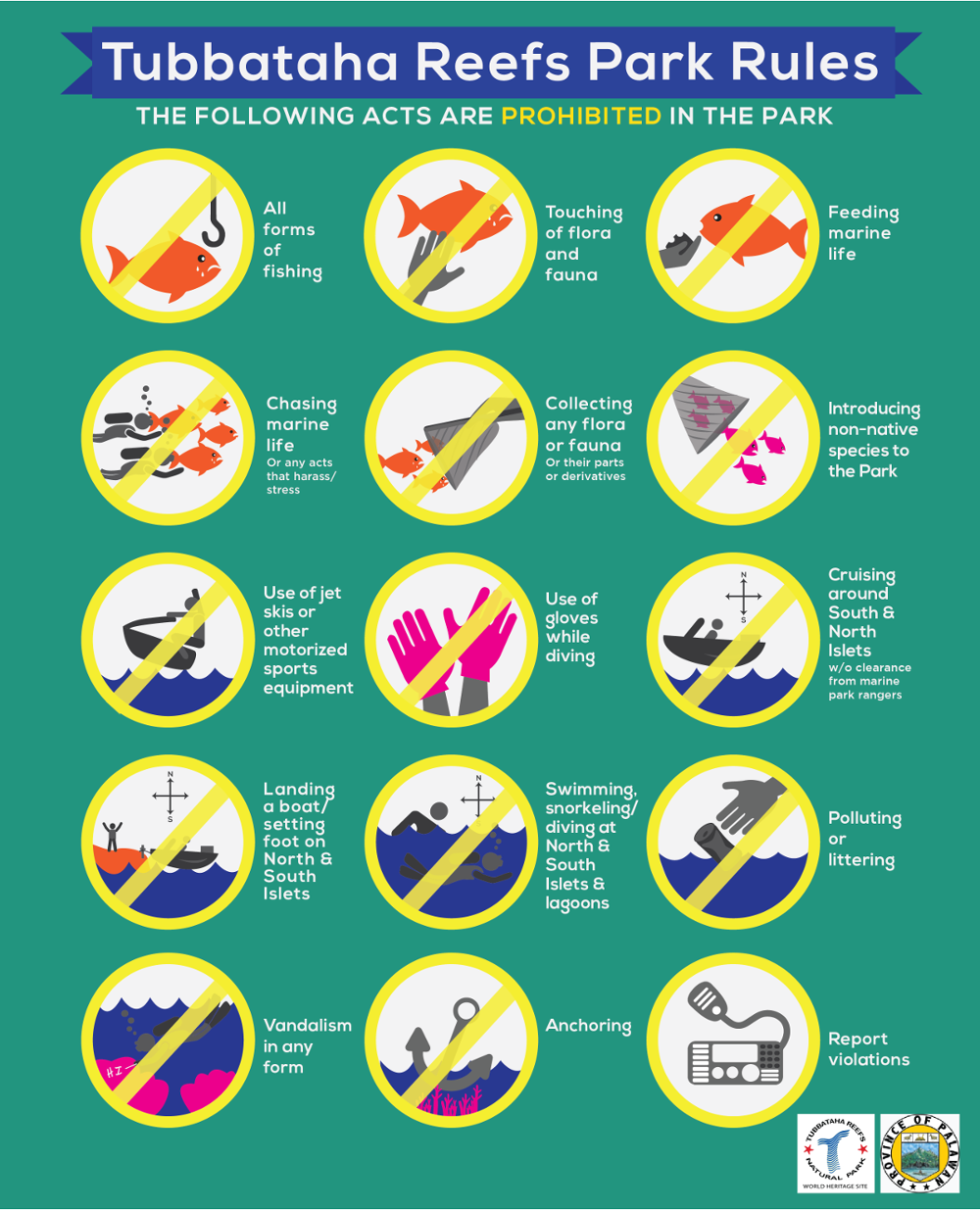 And it is on a video of Angelique Morato-Songco that the briefing ends. Superintendant of the Tubbataha Natural Park, she is also a true mother to rangers who nicknamed her “Mama Rangers”.
And it is on a video of Angelique Morato-Songco that the briefing ends. Superintendant of the Tubbataha Natural Park, she is also a true mother to rangers who nicknamed her “Mama Rangers”.
Diving in Tubbataha is therefore an incredible opportunity to observe coral reefs in perfect health and balance. Because that’s what’s obvious right now. The underwater life here, totally protected, seems to flourish fully. And for good reason, there are no less than half of the world’s known coral species, or more than 360 species out of 800 ! And about 600 species of fish. The Coral Triangle in all its splendour….
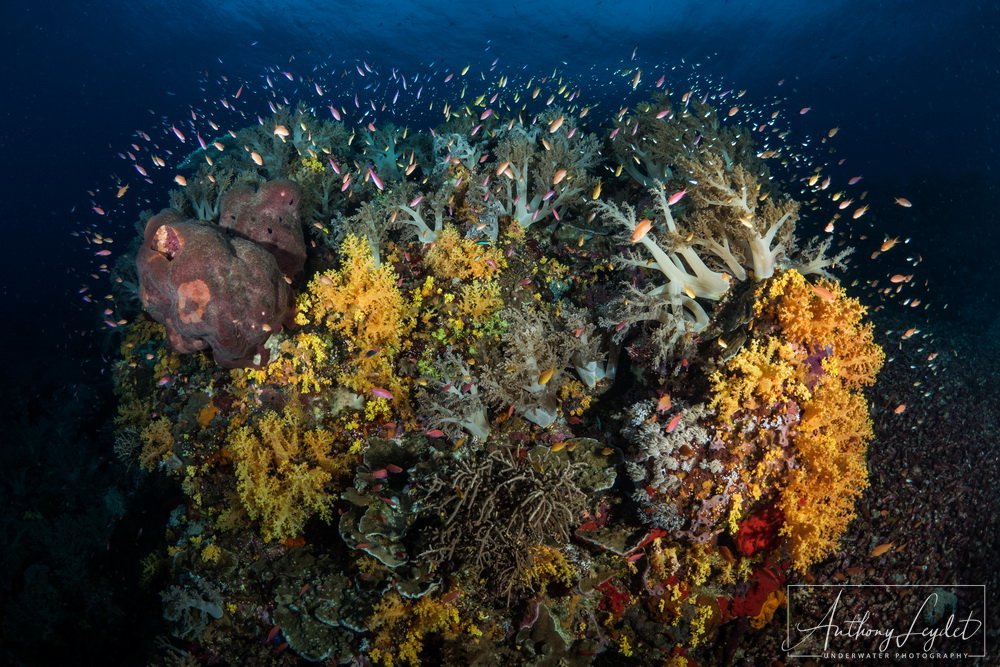
The beauty of the Tubbataha reefs
Far from everything, Nature concentrates here and quickly once under the surface, we no longer know where to give a head. You need to have your eyes everywhere, not only on the reefs, but also in the blue, but also above your head or at the bottom of a drop-off. There’s always something to see.
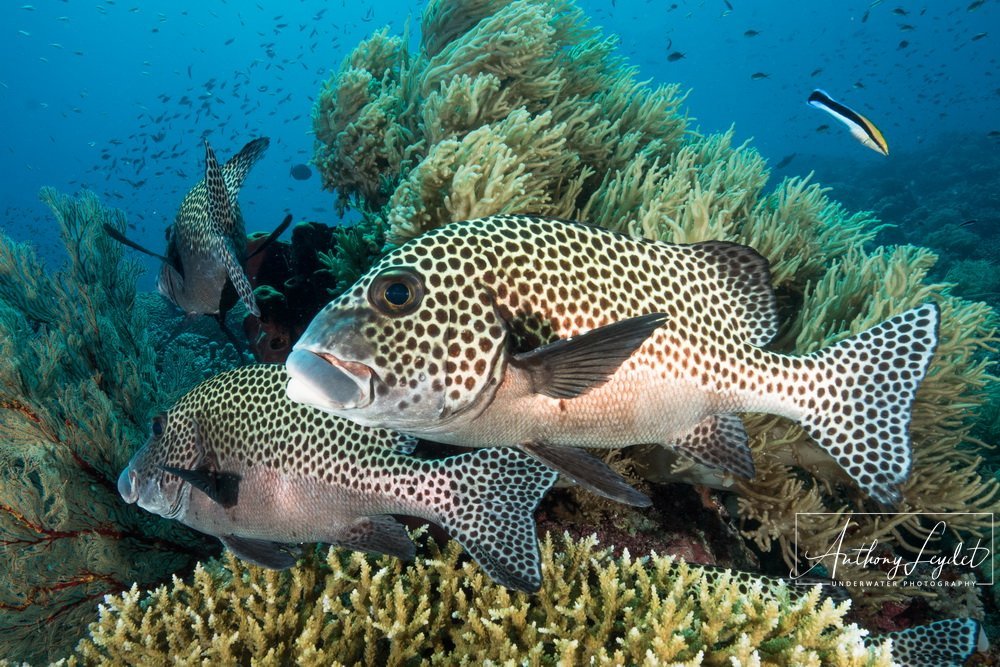
Harlequin sweetlips on a cleaning station
Starting with sharks. Sharks are everywhere in Tubbataha, where a good dozen species have been recorded. This is exceptional ! Even if it is difficult to see so many during 5 days of diving, we see especially very many whitetips reef sharks (Triaenodon obesus), blacktips reef sharks (Carcharhinus melanopterus), silvertips sharks(Carcharhinus albimarginatus), grey sharks (Carcharhinus amblyrhynchos)…
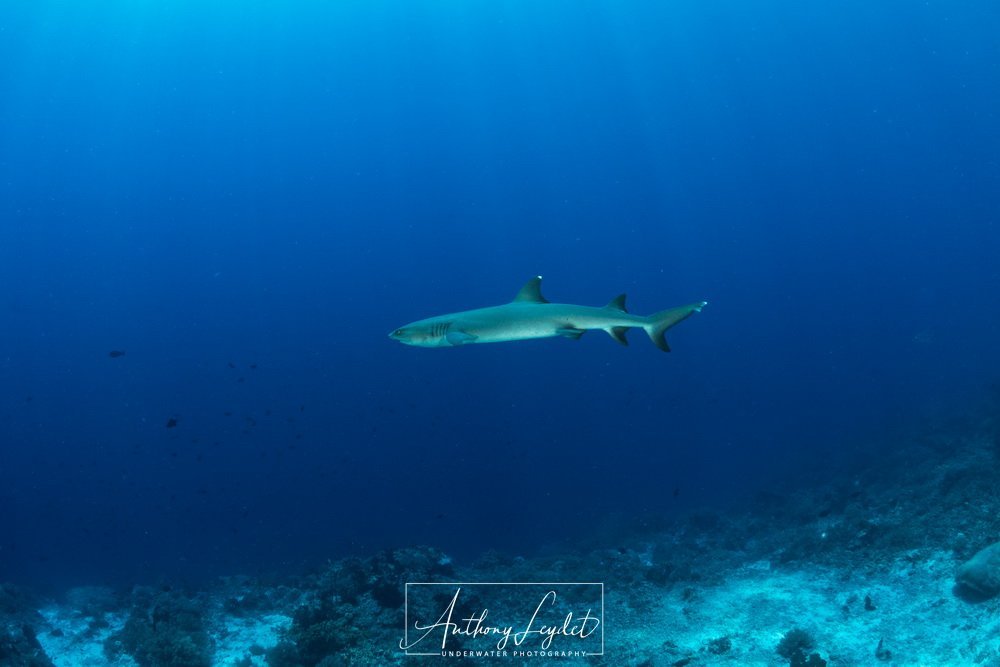
Whitetips reef shark in open water
… and of course, the one that attracts the attention of all divers here, and that can sometimes be long desired (for us, until the last dive!), the famous whale shark very present around these atolls.
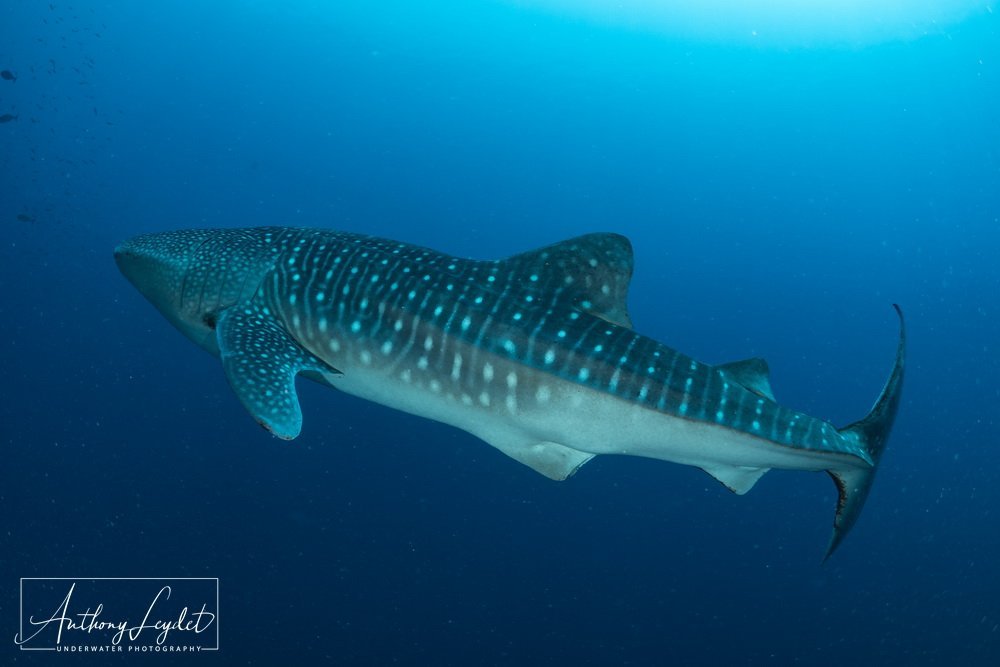
Whale shark, star of Tubbataha
But it is also common to encounter tiger sharks, thresher sharks, nurse sharks, or even hammerheads ! The rays are also present and we will have the pleasure of crossing the road of a beautiful manta ray (Mobula alfredi) :
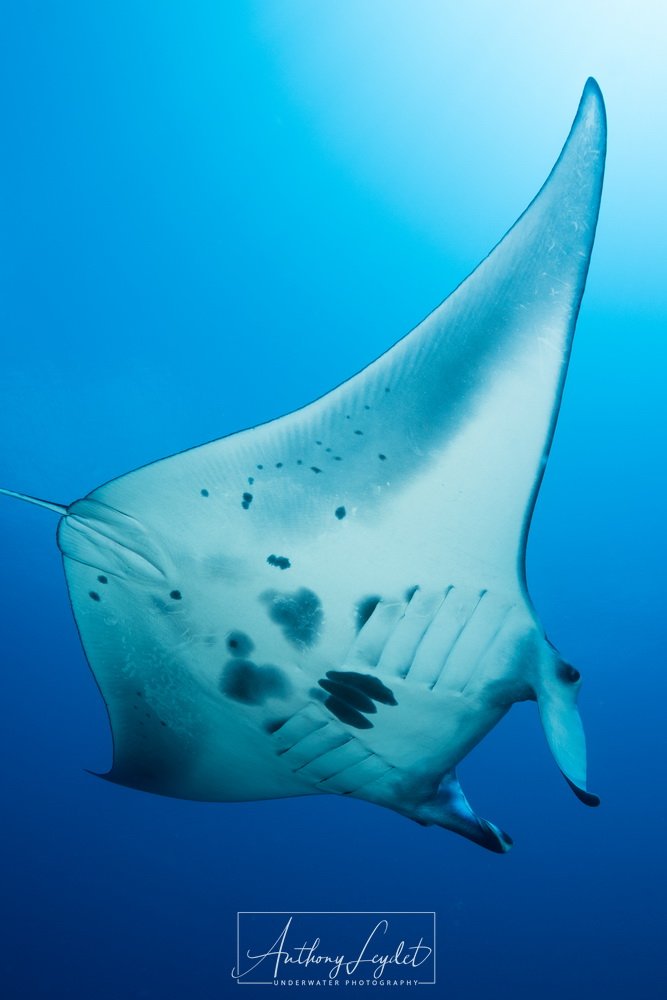
Manta ray of Tubbataha
Tubbataha dive sites
In the middle of the Sulu Sea, the Tubbataha reefs are bathed in waters where currents are generally well marked. Most dives are therefore drift dives and can be either calm or sporty. It is also amusing to see the currents change in a few minutes. You fly over the reef in one direction for most of the dive, then you feel it fall… before starting in the opposite direction. Back to the sender ! Some sites are even exposed to downdrafts, with which we must be vigilant.
There are many gentle slopes on the sites, with sand and corals, which arrive on more or less marked, and even sometimes vertiginous, walls. A glance down the drop off and you will probably see some sharks patrolling. You will also have the opportunity to finish dives on the plateau in a few meters of water.
Jessie Beazley is a reef located northwest of the park, about 20km from the atolls. The visibility is generally excellent, it is one of the most famous sites in Tubbataha.
On the northern atoll, Washing Machine and Shark Airport can be done in the same dive. The first site is known to be a place where currents can strongly shake divers. For us, the washing will be done very gently. As for the second, it bears its name well since one can observe many coral sharks resting on the bottom, like planes on the tarmac.
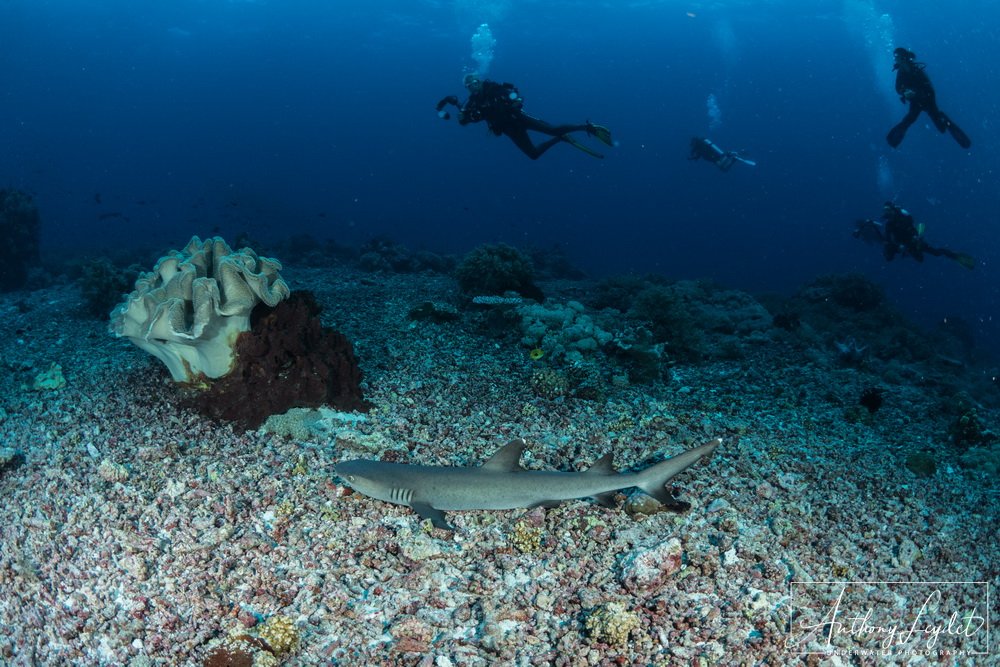
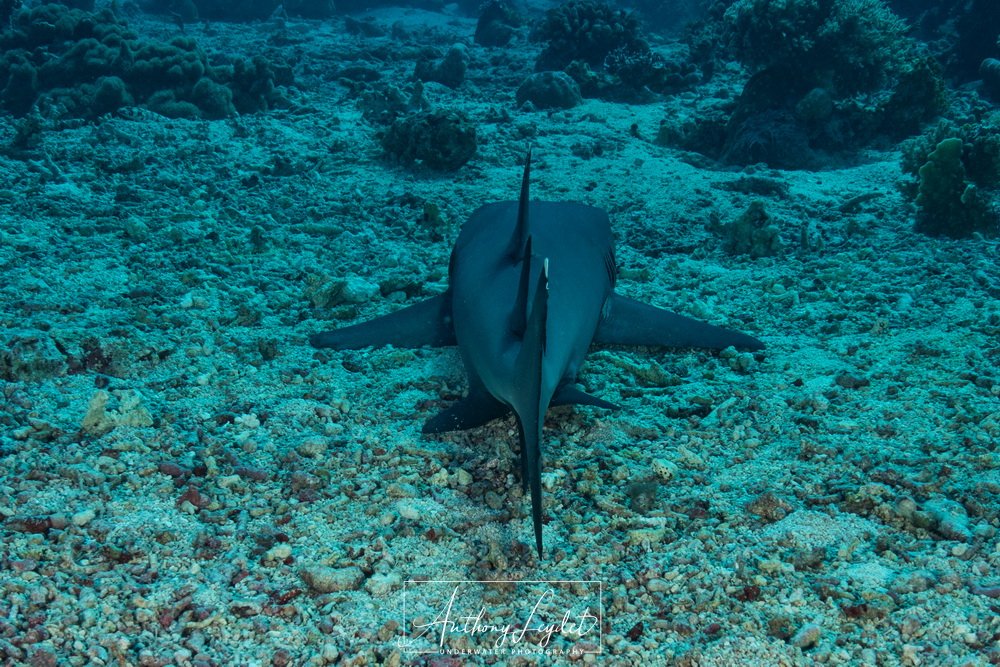
The Sea Fan Alley site is impressive with gorgonians of an incredible size along a magnificent drop-off. South Park is a slope with large sandy flows where you can find an incredible fauna, and in particular a population of triggerfish to make divers tremble !
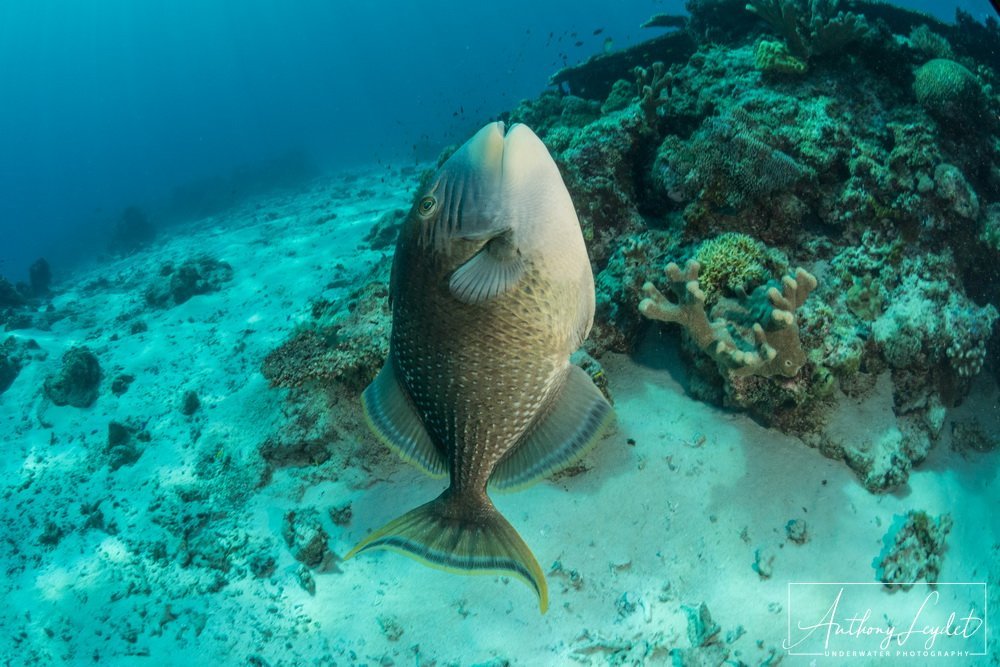
Attack of a yellow margin triggerfish – Tubbataha
Malayan Wreck is a small wreck located on the plain in 3-4 meters of water. We start the dive before leaving on the drop off located a few strokes of fins from there.
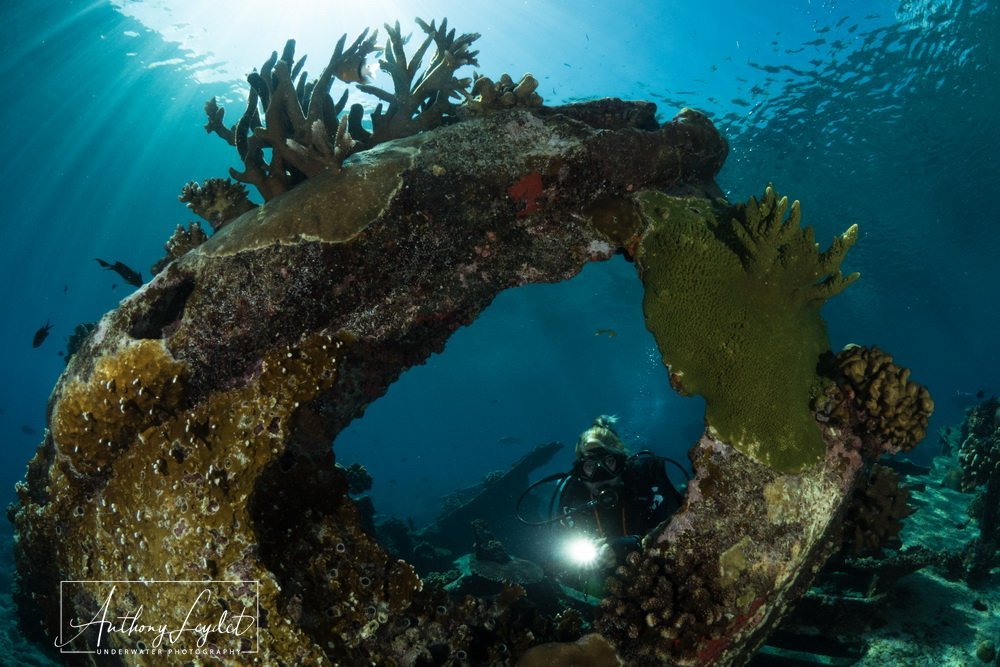
Malayan wreck in Tubbataha
On the southern atoll, Staghorn Point is a real field of acropore corals, as far as the eye can see. I was very pleasantly surprised to see so many napoleon fish, and especially many juveniles.
Delsan Wreck is another small wreck in very little water, but it is above all the starting point of a gently sloping coral garden above a drop-off, where life seems to be concentrated. A site to do and redo several times !
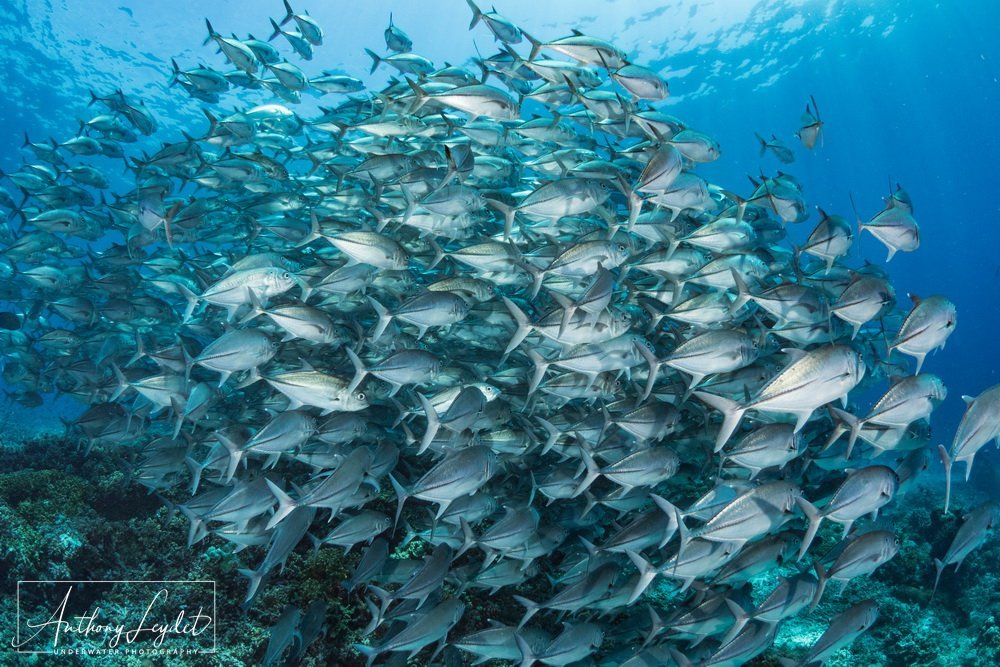
School of bigeye trevallies in Tubbataha
Rangers Station, the headquarters of Tubbataha’s rangers
The Tubbataha Natural Park is under the protection of a dozen rangers permanently present on the North atoll. The teams take turns every two months. Their base camp is the Rangers Station located on the small sandbank south of the largest atoll.
The team, composed of military personnel, coastguards, employees of the Municipality of Cagayancillo, members of the Tubbataha Management Office and divers, plays above all a monitoring and repression role against fishermen and poachers venturing into the park. They also conduct scientific studies and clean up when necessary. They also sometimes carry out actions such as the eradication of Acanthaster starfish, which when they proliferate can be a real threat to corals.
Financed in part by the diving activity, the rangers also lend themselves to the game of the souvenir shop. They sell t-shirts and accessories, which we like to buy for a good cause !
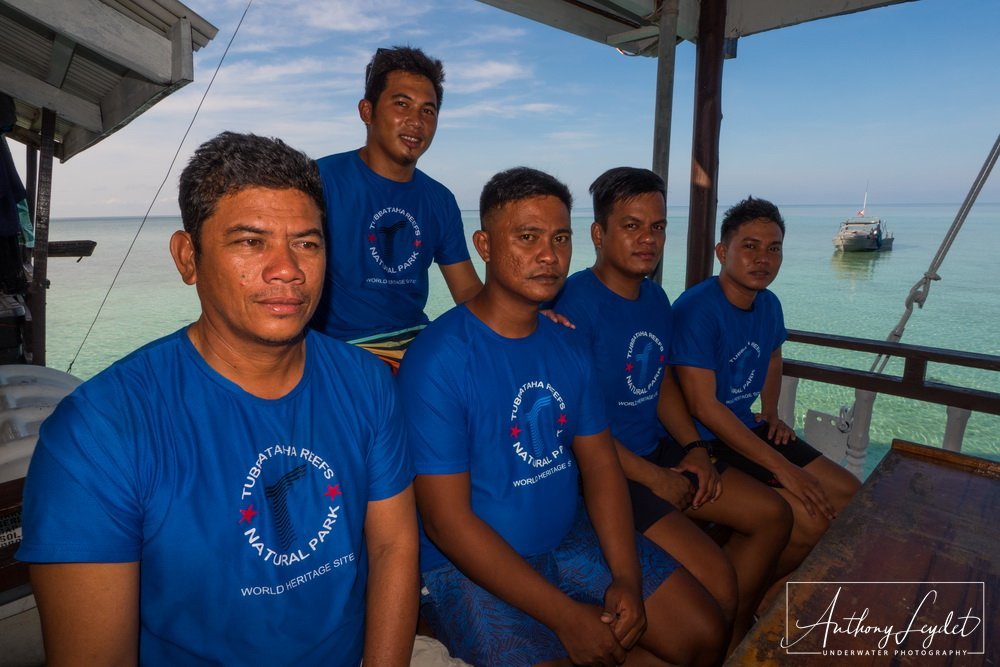
The Rangers watch over the reefs of Tubbataha
Located on the edge of the inner lagoon (strictly forbidden to the public), the rangers’ station has a terrace from which the view is breathtaking. At its feet, in less than a metre of water, four or five relatively small sea turtles swim peacefully under the protective eye of the rangers…
“EQUATION DIVE & TRAVEL” FOR YOUR DIVING STAY IN THE PHILIPPINES
The gorgonians of Tubbataha
On the walls and slopes of the bottom of Tubbataha, gorgonians rise up and take advantage of the currents to feed. The most remarkable are these superb gorgonians of the Melithaea genus, or even the giant yellow gorgonians Annella mollis.
The fishes of Tubbataha
The waters of Tubbataha are rich in truly incredible biodiversity. No less than 600 species of fish have been recorded.
What about the macro fauna in Tubbataha ?
If you are a fan of macro, the Philippines is a paradise for little beast addicts… but it is not in Tubbataha that you should come. Choose places like Panglao, Cabilao, Dauin or Anilao. Here, the currents prevent you most of the time from being stable to take macro pictures, and in addition it is forbidden to touch anything to stabilize yourself ! Especially since with the quantity of large animals, schools of fish, superb corals and beautiful lights… not to equip yourself to make the wide angle is a mistake.
BUT… because there is always a “but”. Don’t think it’s not possible to find all kinds of small critters in Tubbataha. On the contrary, nudibranchs are present, as are shrimps, or a whole bunch of tiny fixed life.
In the end, I didn’t intend to do macro, but I did take what I needed with me. And when our dive guide mentioned the presence of pygmy seahorses on the Gorgona site… that’s all it took ! A winning bet, since we found a pygmy seahorse from Denise (Hippocampus denise):
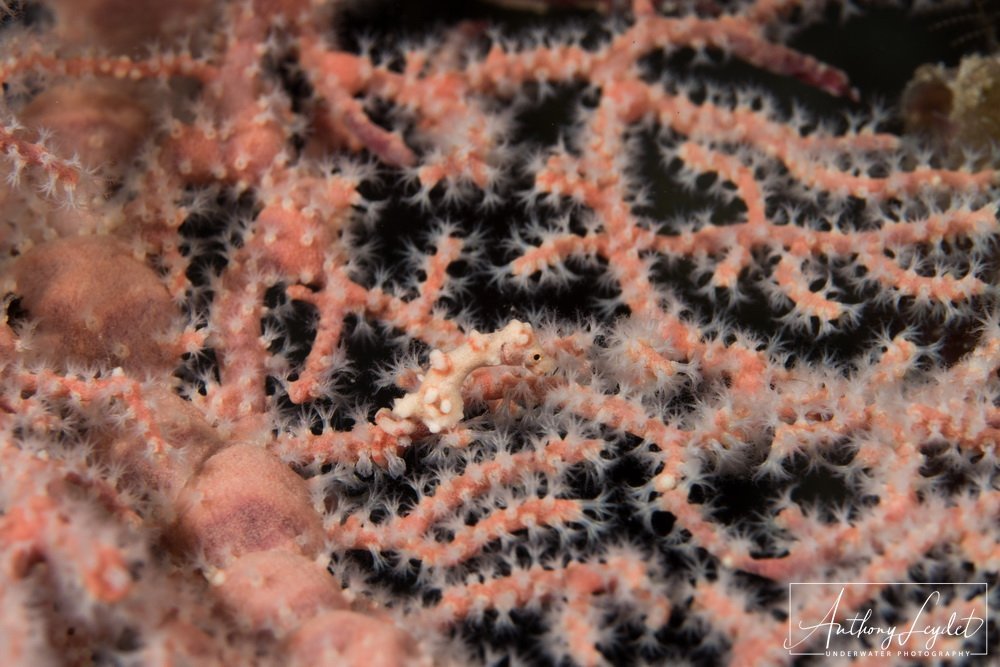
Denise pygmy seahorse in Tubbataha
Getting to and diving in Tubbataha: how to do it ?
Diving in Tubbataha is worth it. The journey is long to reach this UNESCO World Heritage Site.
HOW TO GET THERE ?
First of all, you will have to arrive in the Philippines, usually at Cebu airport in the Visayas, or Manila airport, the capital. Then travel to the city of Puerto Princesa on the island of Palawan in the west of the country (Domestic flight with Philippines Airlines). It is from here that all the cruise ships that go to Tubbataha leave. The boat crossing takes about ten hours.
DIVING IN TUBBATAHA: FOR WHOM ?
With currents sometimes violent, and in general always present, diving in Tubbataha is intended for divers with a good experience. Especially since these are very changing and it is good to keep calm. So you have to be very comfortable and be able to say to yourself that at no time will you put a single piece of palm on the ground. Knowing how to keep your balance underwater and your buoyancy in any situation is essential.
It should also be noted that the pace is high. Indeed, four dives per day are carried out. We dive every 3 hours, with dives lasting between 50 and 60 minutes. There is therefore a 2-hour interval between each dive. Nitrox is strongly recommended ! Especially since the depth to which one rarely reaches exceeds 30m.
NEAREST DECOMPRESSION CHAMBER ?
Due to the distance from the diving area, and the distance to be covered by boat, divers must dive responsibly in order not to cause the accident. The nearest decompression chamber is located in Puerto Princesa on the island of Palawan, the starting point of the liveaboard (therefore 10 hours by boat).
Tubbataha in video
En vous abonnant à la newsletter, vous recevrez uniquement un e-mail lorsqu'un nouvel article paraîtra !

